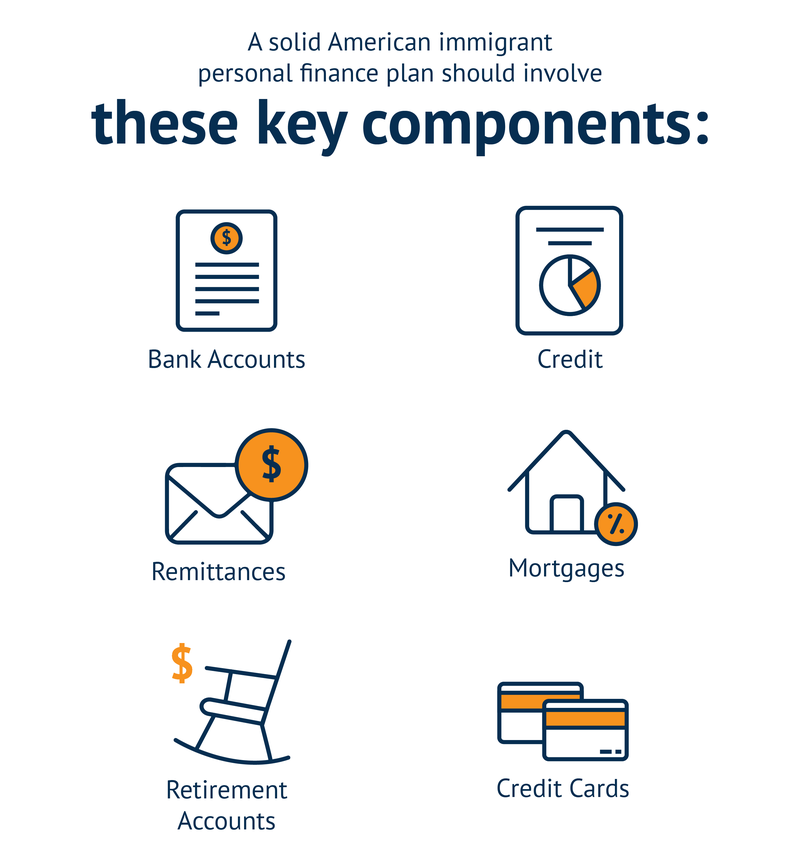
What do you want your future in America to look like? Planning for that future means managing, saving, and investing your money.
You likely know just how to do that in your home country. But in the United States, the terminology and rules of money management might seem a little confusing.
Don’t let that confusion keep you from a secure financial future.

A solid American immigrant personal finance plan should involve these key components:
- Opening bank accounts
- Building up credit
- Knowing how to send remittance payments
- Understanding mortgages
- Creating a retirement account
- Using credit cards
Where should you start?
A bank should be your first stop, as it can provide the most fundamental American personal finance tools. Your bank may even offer all of the products we mentioned above. Once your credit score is rising and your money is secure, you’ll be ready to seize the American dream.
But you’ll need to get your documentation ready first.
How to get a Social Security number
Financial institutions require proof of your identity, and for American citizens, that means providing a Social Security number (SSN). It takes time, patience, and documentation to get that number. But the effort is well worth it.
If you were born in this country, you may already have an SSN. Some hospitals sign children up for this document before their moms leave the hospital. If you don’t have the number and can’t find your card, you’ll need to follow the same steps used by noncitizens.
If you’re not an American citizen, you can get an SSN by
- Finding the Social Security office near you. The Social Security website can help you locate the nearest office.
- Bringing immigration documentation to the office, including your Lawful Permanent Resident Card, admission stamp, Form I-94 (Arrival/Departure Record), or Form 1-766 (Employment Authorization Document/EAD).
- Bringing proof of your age to the office, such as your birth certificate.
- Completing an application in the office.
Your card will be mailed when the office has verified your information. There’s no fee for this service, and the card is free. If you’re not eligible for an SSN, you’ll get that notification in the mail, too.
If you can’t get an SSN, you could instead use an individual taxpayer identification number (ITIN) issued by the Internal Revenue Service. You can get one by:
- Visiting a Taxpayer Assistance Center. You can find the closest office online.
- Bringing identification documents (passports, drivers licenses, and USCIS documents will work) to the office.
- Filling out form W-7 in the office.
Your card will appear in your mailbox in about seven weeks.
It may seem like a hassle to get these little pieces of identification, but they’re critical for banks, credit card lenders, and others. Your financial identity is tied to this number, and without it, you’ll find it difficult to move forward with your financial future.
How to open a bank account
Looking for a place to store your money? You’ll need a relationship with a financial institution. Banks typically offer two types of accounts.
- Checking accounts are for day-to-day transactions. You’ll put money in and take it out relatively quickly.
- Savings accounts help you set aside money for future use. You might take money out of…
This article was sourced from the Fool.
